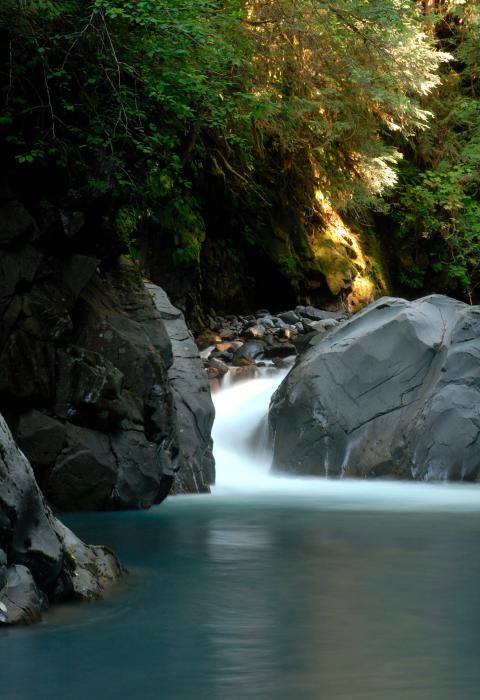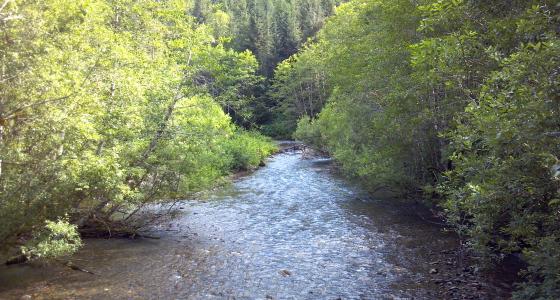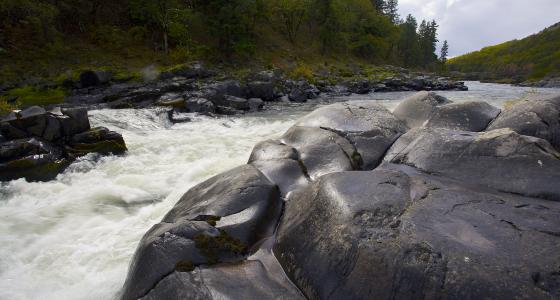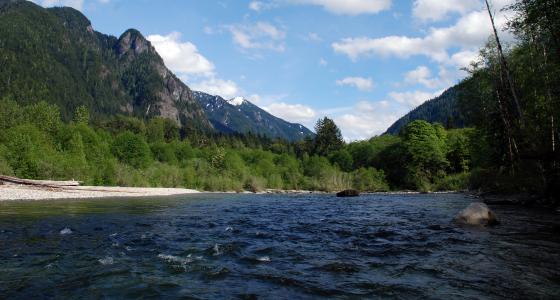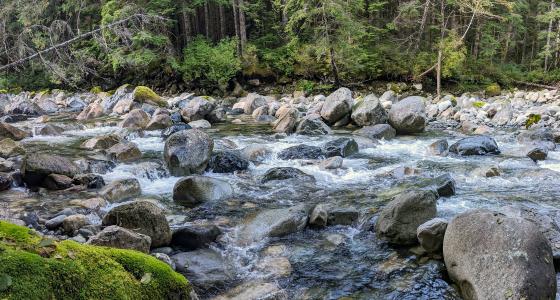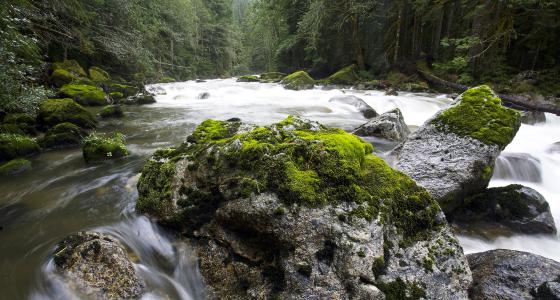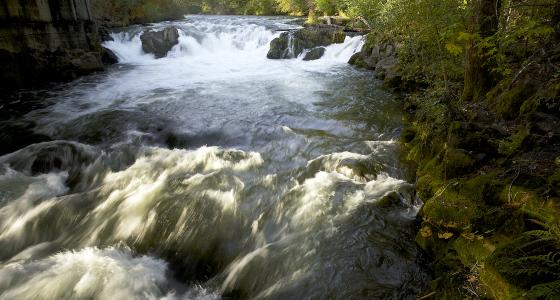Of course, Washington is known for water. On the west side, the rainforests of the Olympic Peninsula fill hundreds of wilderness streams, in turn supporting world-famous salmonid runs. Those same Olympic Mountains capture rain for the Elwha River, one of the greatest experiments in environmental restoration ever. At one time famous for the 100-pound-plus salmon found there, the river was dammed in the early 1900s by the Elwha and Glines Canyon dams. For more than a century, the eleven runs of salmon of the river were blocked from the headwaters. Finally, after two decades of planning, the largest dam removal in U.S. history began on September 17, 2011. Six months later the Elwha Dam was gone, followed by the Glines Canyon Dam in 2014. Today, the Elwha River once again flows freely from its headwaters in the Olympic Mountains to the Strait of Juan de Fuca. And the fish are returning—as is the river delta from the release of millions of cubic yards of sand and silt behind the dams. By the way, the river has been found eligible for designation as wild and scenic for its entire length and, if ever designated, would be the first restored river added to the National System.
On the east side of the state, the Columbia River dominates the landscape—and the lives of the people living there. The river transports the snowmelt of Canada, providing irrigation water for farms and drinking water for millions. It provided the power and cooling for the Manhattan Project, the infamous project to bring nuclear bombs into existence. The Columbia Basin Project, made famous by the folk songs of Woody Guthrie, serves about 671,000 acres in east-central Washington. So great is the flow of the Columbia River that the hundreds of thousands of acres irrigated is done with just 2% of the rivers flow—or less. Today, most of the river sits behind massive dams generating power for millions, but a 51-mile stretch remains “free flowing”—the Hanford Reach. This section of river has been found eligible and suitable for designation as wild and scenic and flows through the Hanford Reach National Monument, the first national monument for the U.S. Fish and Wildlife Service.
Washington has approximately 70,439 miles of river, of which 197 miles are designated as wild and scenic—less than 3/10ths of 1% of the state’s river miles.

